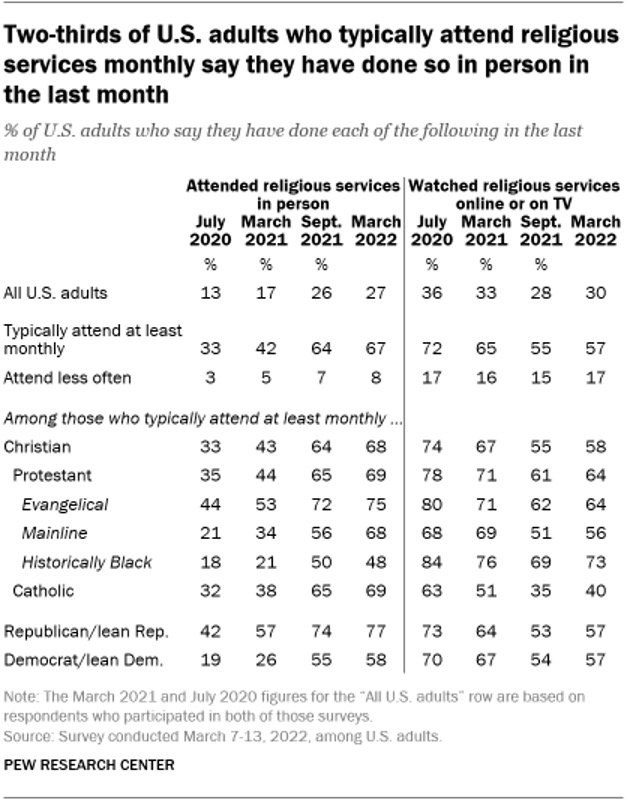The latest survey from the Pew Research Center has found that about as many churchgoers who had returned to in-person attendance six months ago are about the same number attending now. In other words, although the situation improved in relation to all things COVID — vaccinations available, mask mandates dropped, case numbers plunged — there has been no appreciable change in the number of people who have returned.
About two-thirds (64%) had returned by September 2021, and now, in March 2022 (67%), it’s still right at about two-thirds.
As my friend Carey Nieuwhof wrote at the start of the year, “2021 had many leaders clinging to the idea that the next season — Easter, the new school year, Christmas, etc. — would bring attendance back to 2019 levels. For most churches, that ‘magic season’ never materialized.”
He’s right. They haven’t come back. And they aren’t coming back. The church you now have is the church you now have.

There are several reasons why embracing this is important. First, because it will help you realize that you are not in a season of regaining your attender/volunteer base but a season of rebuilding it. It is critical for leaders to invest their energies accordingly.
Second, it will help you realize that you must embrace the hybrid model of church. Specifically, the hybrid of being both physical and digital.
Speaking in very broad terms, there are two types of churches operating at the moment: those that reopened and almost immediately scaled back on all things online, and those who have reopened for in-person services but have maintained an online constituency. (Some, such as the church I lead, go beyond merely maintaining an online presence to encouraging online attenders by offering a full online campus, which you can read in previous blogs I’ve written titled “The Most Overlooked Place to Plant a Church” and “The Importance of Affirming Online Attendance.”)
The first type of church assumed that reopening for in-person services and the demise of all things COVID were all it would take for the return of pre-pandemic attendance levels. The problem, after all, was the pandemic.
They assumed wrong.
There were broader issues at hand that were simply accelerated by the pandemic. Church attendance had been in decline for some time. Further, the broader cultural realities — namely a post-Christian world and a digital revolution — had changed both the nature of our mission field and the means by which we reach it. Simply going back to a “business as usual” approach is not the solution.
Churches that went hybrid and stayed hybrid found that while in-person attendance has not returned to pre-pandemic levels, the overall attendance and health of the church has not only been maintained but has also grown. In other words, because of a hybrid model, diminished in-person numbers do not reflect an overall diminishment of the church. Further, that giving people the freedom to attend in person or online increased overall engagement with the church.

